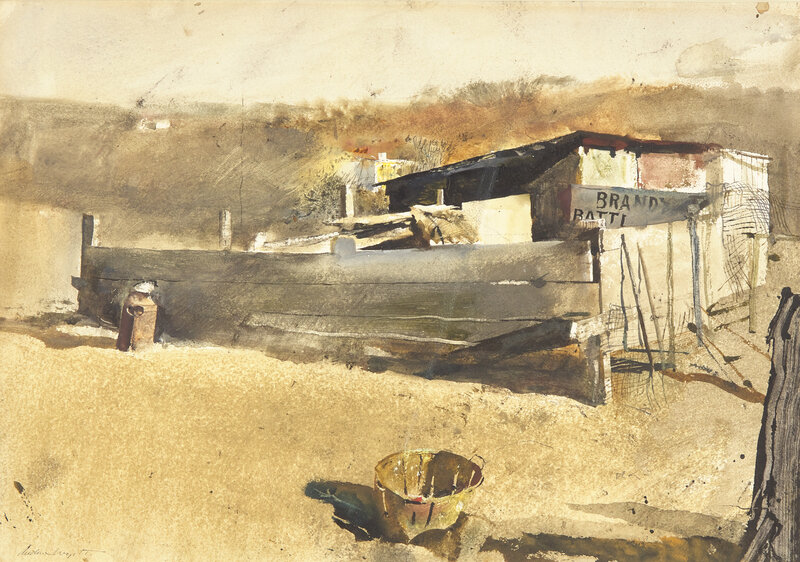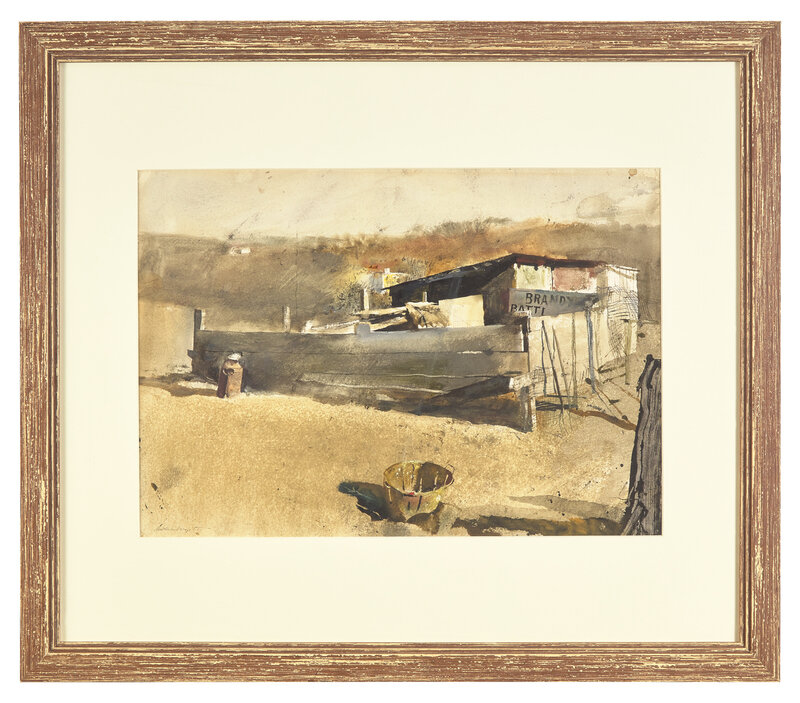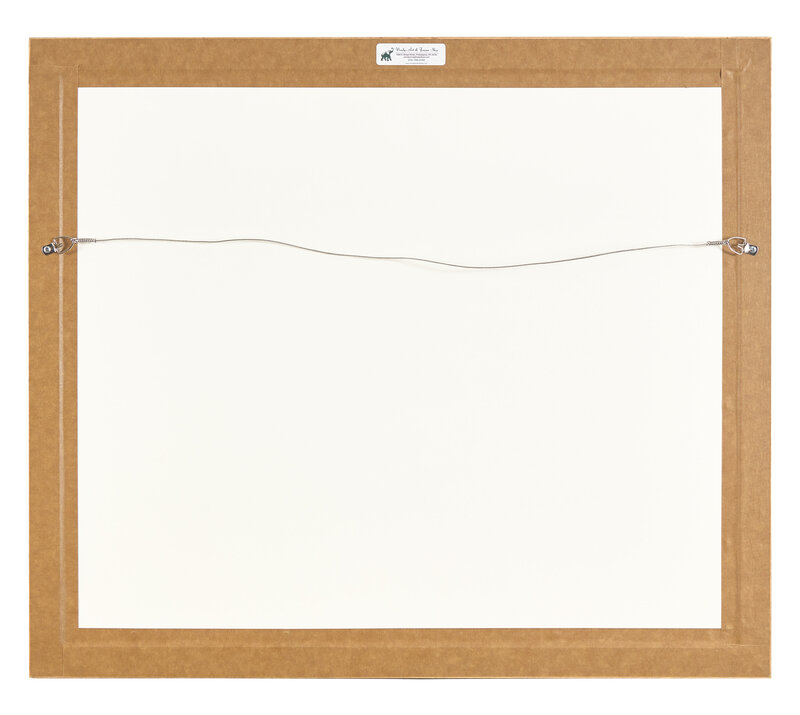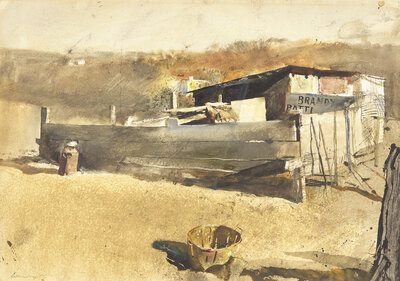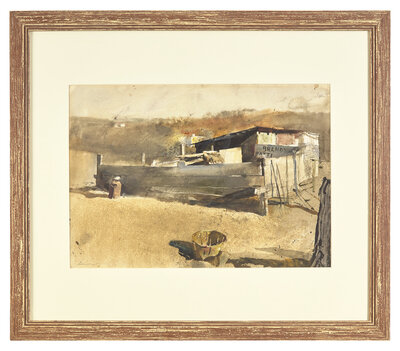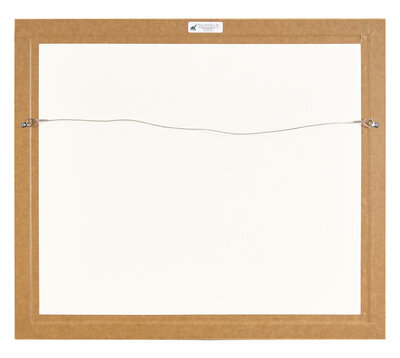Condition Report
Contact Information
Auction Specialist
Lot 93
Andrew Wyeth
(American, 1917-2009)
Park Sign, 1955
Sale 2105 - American Art and Pennsylvania Impressionists
Dec 8, 2024
2:00PM ET
Live / Philadelphia
Own a similar item?
Estimate
$60,000 -
100,000
Price Realized
$57,150
Sold prices are inclusive of Buyer’s Premium
Lot Description
Andrew Wyeth
(American, 1917-2009)
Park Sign, 1955
watercolor on paper
signed Andrew Wyeth (lower left)
sheet: 14 x 20 in.
The Andrew & Betsy Wyeth Study Center of the Brandywine Museum of Art confirms that this object is recorded in Betsy James Wyeth’s files.
Provenance:
Private Collection, Cashiers, North Carolina, 1963.
Private Collection, Alabama.
Lot Essay:
As a prominent member of the American Regionalist movement, Andrew Wyeth made familiar locations an essential element of his aesthetic. Chadds Ford, Pennsylvania, the artist’s hometown, was depicted in countless works. Park Sign depicts the farm of Adam Johnson, a member of the African American community in Chadds Ford who lived along the path from Wyeth’s studio to Kuerner farm, also an endless source of inspiration for the artist. Johnson’s farm, where he raised pigs and chickens, consisted of rickety, make-shift buildings, far from picturesque, but incorporating peculiar elements from nearby venues, such as the Brandywine Battlefield sign partially visible on the façade, making them inherent products of the local. While Wyeth portrayed the farmer several times throughout his career, in this instance, Johnson’s imposing figure is eliminated from the composition, yielding to the ramshackle edifice.
The erasure of the figure allows for the exploration of an abstract dimension, with personal and idiosyncratic details subtly morphing into a sweeping, timeless meaning. Of Johnson’s farm, Wyeth said: "All those shapes of the pigpen…I found a tremendous charge of energy in that strange shack.” The structure is composed of sharply contrasting hues of cream, brown and grey as well as strong intersecting lines, in complete opposition to the more visually uniform and muted background. The gaze is drawn instantly to this striking structure. But there is in fact little to be seen on the surface, a notion reinforced by the building’s humble appearance. It is eerily quiet and still, as if suspended in time, as if an empty shell. In an unsettling cognitive twist, the portrayed object, the farm at the heart of the composition, reveals itself to be less an explicit subject, and more a repository for deeper themes. There is a lot to be seen, surely, but beneath what meets the eye at first glance.
The farm thus becomes a vessel for profound, yet elusive, meaning. One could speculate that Wyeth is reflecting on the enduring presence of his community through the decades, on timeless kinship, with the unstable—but still standing—farm working as a vessel for lifelong memories. But several clues, including the empty basket, barren foreground, and purposeless wire fencing, complicate this work of memorialization, as they suggest that while there is meaning to be seized, it may be just out of reach, seeping away. The plain and bare aspect of the farm and of its setting may ultimately refer to the inexorable passing of time, to loss and grief, emotions that Wyeth personally experienced and which became a pervasive theme in his oeuvre.
